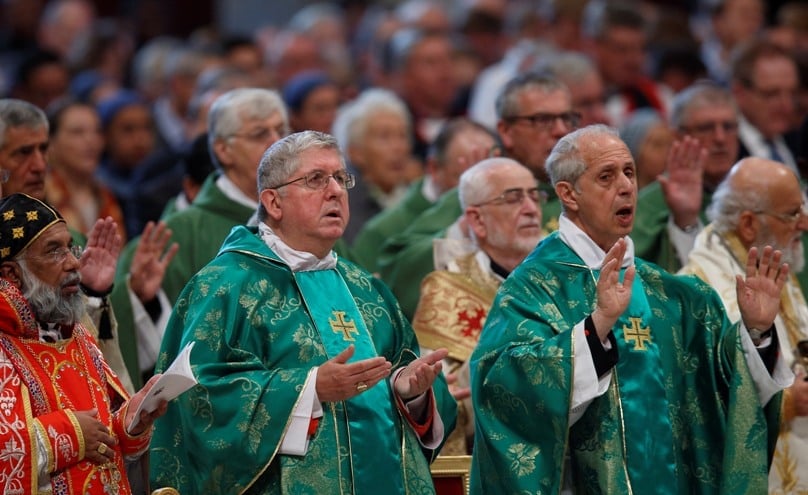
One of the fascinating things about the just-concluded Synod on the Family was to watch numerous commentators and journalists – Catholic or otherwise – writing as if Pope Francis’ remarks on divorced and re-married Catholics living in un-annulled marriages were some sort of revolutionary development in the life of the Church.
The Holy Father’s clear pastoral concern for such people was also widely interpreted as near-synonymous with the proposals emanating largely from the German-speaking bishops at the Synod to effectively begin the de facto acceptance that marriage can be dissolved or ignored, regardless of Christ’s famous teaching that what God has put together no man can put asunder.
But two things need to be registered: first, Pope Francis is definitely not the first Roman pontiff to look for ways to reach out and include those Catholics from un-anulled marriages living in new relationships in parish life and the life of the Church in general; secondly, to confuse his very real and genuine pastoral concern for a situation which is widespread among the baptised with the blitzkrieg attempt to engineer a complete reversal of two millennia of clearly understood Church teaching about marriage and the Eucharist would be a fatal error.
What was happening at the synod was not an examination of two aspects of the same issue, but a consideration of two different issues – a key point missed by so many journalists and commentators.
Rewind 10 years to July 2005, just three months after his election, when Benedict XVI put the situation of the divorced and re-married at the top of the papal agenda. He told priests, religious and deacons that divorced and civilly remarried Catholics who suffer because they cannot receive Communion must be welcomed in parishes as Catholics who witness to the importance of the Eucharist.
At the same time, he said, if a priest, acting out of compassion for their suffering, gives them the Eucharist, he risks undermining the dignity and indissolubility of the sacrament of marriage. “We all know that this is a particularly painful situation,” he told his audience.
Pope Benedict said that when he was prefect of the Congregation for the Doctrine of the Faith he asked several bishops’ conferences and experts to study the problem, which in effect was “a sacrament celebrated without faith”. He said he had thought that a church marriage could be invalid if the faith of the couple celebrating the sacrament was lacking.
“But from the discussions we had, I understood that the problem was very difficult” and that further study was necessary, he said.
Catholics must keep in mind, he said, that even if divorced and civilly remarried Catholics cannot receive the Eucharist, they are part of the Church and are loved by Christ. Priests and parishioners must share the suffering of those excluded from the Eucharist, he said, but they cannot act in a way that casts doubt on the unbreakable bond of sacramental marriage.
“We know that the moment we give in out of love, we harm the sacrament itself, and its indissolubility appears weakened,” Pope Benedict said.
The second issue, known as the Kasper proposal, received minimal support throughout the Synod but, if it had somehow been accepted, it would have constituted a very real problem – not to mention that it had already been decisively and magisterially rejected by the papacies of John Paul II and Benedict, two intellectual giants in the history of the Church.
In effect, the Kasper proposal was well-meaning – theology-lite – but well and truly out of its theological depth.
One of the basic tests it would have failed would have been the principle observed by that giant of 19th century Catholicism, Blessed John Henry Newman, whose idea of the development of doctrine became so influential at Vatican II: while doctrine can develop and move forward, it has to be in organic harmony with what the Church has already established and come to understand in its journey, that the newly-discerned dimensions of doctrine are already implicit in Scripture and the tradition of the Church.
Despite occasional gems – such as that of Dr Anca-Maria Cernea, president of the Association of Catholic Doctors of Bucharest – the fact that interventions were limited to a mere 180 seconds was an obvious weakness of the Synod.
That the controversial Kasper proposals were not scrutinised against the principles of the development of doctrine and that the principles were not even considered themselves was another problem.
But despite such hiccups, the fact that the Church’s concern for the divorced and remarried and its fidelity to its faith in Christ and his teaching were simultaneously on global display was reassuring, a sign that Christ is with his Church – and never abandons it.
